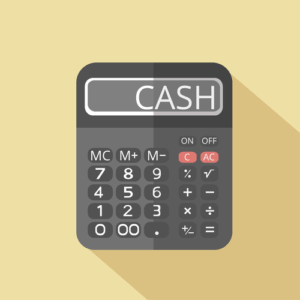
The $15-per-month plan limits you to 20 invoices per month, but there’s no limit to the number of clients you have. To get project and expense tracking, you’ll have to upgrade to the highest-priced plan ($80 per month). This level of actionable insight provides a robust, data-driven framework for your invoice automation strategies, taking gut feel out of the equation.

Transaction Matching
- Collaborate with the software vendor to customize and configure the automated invoicing solution according to your specific requirements.
- The appropriate personnel on your accounts payable team will have access to this inbox, though it’s not always owned by just one employee.
- It also potentially reduces the volume of supplier inquiries and related AP team response time.
- It involves automating various tasks involved in processing supplier invoices, from data capture and validation to approval and payment.
- Of course, you will need to make an upfront investment in an automated AP solution if you don’t already have one.
- Accounts payable software automates business payment methods end to end.
- Some businesses may think a semi-automated approach might seem like a good starting point.
Add as many steps as needed to your approval process, get smart notifications, and create custom workflows. With the Precoro invoice management system, you approve bills 2,5x faster and save 95% of your time. With an ap automation solution, you can approve an invoice and do a three-way matching in minutes without human intervention. When doing it manually, invoice-to-payment matching can be extremely time-consuming. You can add as many approval steps as needed, get smart notifications, and create custom workflows that will suit your business needs.
- Consider features like custom approval workflows, auto-syncing with accounting, and support for international payments.
- With real-time updates and insights, SpendControl keeps all your financial data up to date, ensuring a smooth and efficient month-end and year-end close.
- DocuClipper’s efficiency and precision make it an indispensable tool for modern businesses looking to streamline their invoice processing.
- Automated invoice processing can significantly enhance the efficiency of your finance department.
- It reduces errors through OCR technology, provides real-time invoice tracking, and ensures compliance with secure storage for audits.
- For instance, smaller payments might require only one level of approval, while larger amounts may need sign-offs from multiple departments.
Future of Invoice Processing Automation

Auto billing is the automated process of charging customers’ payment methods on a recurring schedule for ongoing purchases and subscription services. It handles everything from automatically signing up customers for subscriptions to processing recurring credit automated invoice processing card payments per a defined billing cycle without requiring manual invoicing or reminders. Managing manual billing and payments for even hundreds of customers is massively time-consuming, but automating bulk/recurring invoices based on flexible rules engines can save you hours each month. Automating tedious billing tasks like invoicing and payment collection also frees up employee time that they would’ve previously spent on manual data entry and reconciliation.

Cost-effectiveness and Better Cash Flow Management
That’s why modern businesses use invoice management software that eliminates data entry, speeds up approvals, prevents duplicate payments, and integrates seamlessly with their accounting software. Invoice automation is revolutionizing the Bakery Accounting way businesses manage their accounts payable (AP) processes. By leveraging software to streamline invoice processing and payment, companies are saving significant time and money.
- It requires multiple touchpoints, from invoice receipt and data entry to approval routing and payment processing, all of which can lead to inefficiencies.
- Instead of just reducing errors, it connects finance systems, adapts to business needs, and provides insights that help teams make better financial decisions.
- Lost invoices can cause serious problems with vendors and hurt your cash flow or even force you to start the invoice processing over again.
- Unlike many competitors, Ramp offers a free version to get you started automating invoices to save time, reduce costs, and get better visibility into your finances.
- But legacy systems and manual processes often stand in the way, slowing down operations and limiting visibility into financial health.
- The process begins by optimizing how you receive invoices from vendors, helping you reduce the need for manual collection and data entry.
What’s the difference between an invoice and a bill?

While semi-automated systems can help reduce some manual effort, they often lead to broken workflows and inefficiencies. Users may need to switch between multiple tools or tabs, copy-pasting data from one system to another, leading to delays and potential errors. This approach often involves using tools like QuickBooks Online, Xero, and SAP Concur, resulting in a fragmented workflow. Now, when an invoice arrives, Decipher reads it, interprets the data and validates it. The digital workers then take the standardized file, combine it with data from other systems, and run checks on the accuracy and auditability of the invoice.

Payment
Ongoing support and training are essential for ensuring the long-term success of your implementation. Invoices are automatically captured from various sources, normal balance such as email inboxes, supplier portals, or EDI systems. OCR technology, like the one used in Nanonets, extracts key information from the invoices, including vendor details, invoice numbers, amounts, and due dates. The extracted data is then validated using AI algorithms to ensure accuracy.


